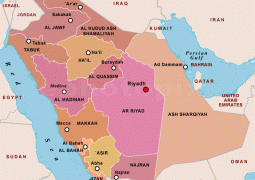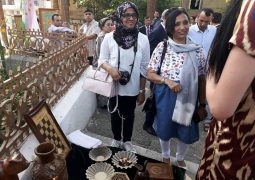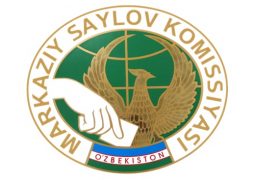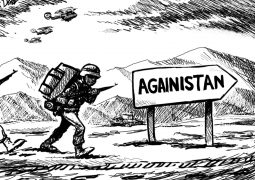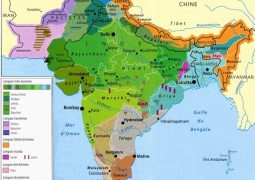Dr. M: 5G to benefit the nation
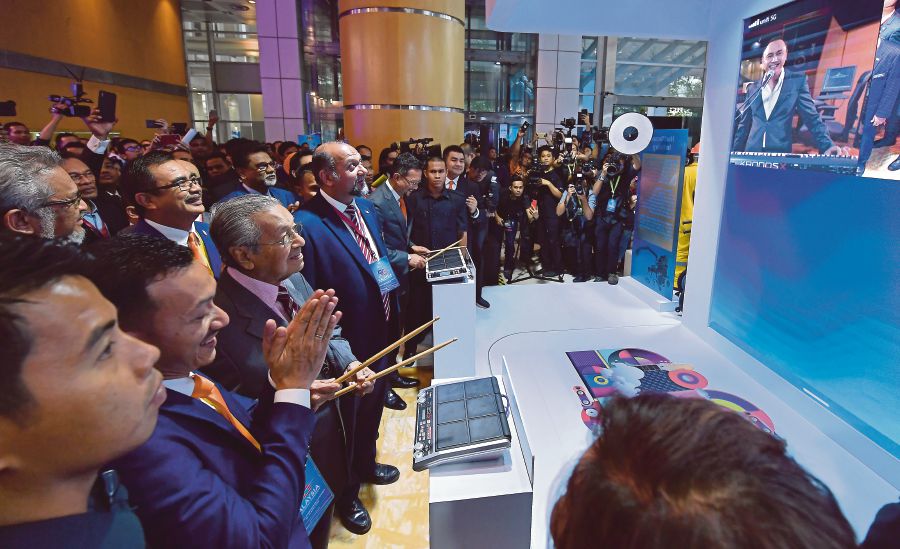
5G to benefit the nation
By Izwan Ismail – April 18, 2019 @ 9:37pm
PUTRAJAYA: Once available, 5G technology and services are set to propel Malaysia into a high-tech nation and are seen as the catalyst towards Industrial Revolution 4.0 (IR4.0) that will be able to generate better economic and social growth.
At the 5G Malaysia Showcase at the Perbadanan Putrajaya building, which was launched by Prime Minister Tun Dr Mahathir Mohamad, a broad range of 5G services and capability were put on display by various telecommunications and industry players.
Besides the consumers who will get to enjoy improved and uninterruptible broadband connectivity, the industrial and services areas are seen as the main components of the technology users, which will also give a positive impact to the consumers.
These are areas like agriculture, healthcare, public safety, manufacturing, smart city, education, automotive and many more.
The potential usage and benefits were shown at the event when the prime minister arrived at the venue in an 5G-enabled autonomous Proton Exora.
The vehicle uses a combination of sensors, cameras, radar and artificial intelligence (AI) to travel between destinations without a human operator.
The whole scene was shot and transmitted live using drone in 5K resolution to the audience.
Dr Mahathir entered the exhibition area passing through a security check point that used a highly secured facial recognition system.
While the 5G technology is now still under testing for six months under the National Fiberisation and Connectivity Plan (NFCP) and a nationwide service may only come by 2021, earlier adoption of the technology will take place in targeted industrial areas.
Dr Mahathir said one of the key elements to enable and usher in this new age was advanced mobile wireless technology. By and large, the earlier generations of mobile connectivity enabled people-to-people communications, with some capabilities for different scenarios. But, 5G offers much more than just speed.
“It promises a world, where not only people are connected, but all things are connected,” said Dr Mahathir.
“From cars on the roads to robotic devices, and doctors able to perform surgeries from the other side of the world, to a fleet of drones that can fly over a field of crops, using sensors on the ground to sort, pick, feed, and water individual plants automatically.
“These are among the wonders and benefits that 5G connectivity can unlock and it requires massive increase in the level of connectivity.”
“Our daily life in the future will be made more convenient and more efficient, enhanced and enabled by 5G connectivity.
“We are talking of farmers being able to detect soil moisture and acidity in real time to maximise their yield and efficiency and fishermen being able to maximize their yield by precision techniques.
“We are looking at the police or firefighters substantially reducing risk to their lives whilst still being able to provide quick and precise responses through robotics empowered by 5G.
“These are just a few examples of what will be possible in future with 5G.”
Meanwhile, Minister of Communications and Multimedia Gobind Singh Deo said 5G would most certainly amplify the country’s capacity to participate in IR4.0.
“It will enable our industries to fully exploit the power of artificial intelligence, robotics, big data, virtual reality, and software engineering,” he said.
“Our daily life in the future will be made more convenient and more efficient – enhanced and enabled by 5G connectivity. We are talking of farmers being able to detect soil moisture and acidity in real time to maximise their yield and efficiency and fishermen being able to maximise their yield by precision techniques. We are looking at the police or firefighters substantially reducing risk to their lives whilst still being able to provide quick and precise responses through robotics empowered by 5G. These are just a few examples of what will be possible in future with 5G,” he added.
On the exhibition floor, players like DiGi, Celcom, TM, Maxis, UMobile, Nokia, and many more showcased the potential of 5G technology.
Digi, for instance, showed how real-time emergency response can be done using 5G and drones.
The company showcased 5G capabilities via enhanced mobile broadband with ultra-low latency, in improving emergency response and human safety scenarios in a more coordinated and integrated manner in real-time.
It also demonstrated 5G capabilities via enhanced mobile broadband to offer Augmented Reality (AR) applications for future educational purpose.
An example of usage case can be applied for various educational aspects across different verticals (i.e. factories for training purpose), and across tertiary and higher education institution
The aim is to provide elevated educational audio and visual aspects that enable greater interactivity for educators and students beyond the current 2D visualisation from projectors or TV
Armed with 5G and an AR goggle, educators and students will be able to visualise and interact more freely, enriching the learning experience by making it more fun and vivid
Meanwhile, in the argriculture area, players like Celcom showed its drone technology for use in farms for monitoring trees and maping as well as for fertilisation work.
Besides agriculture, the health care industry will also benefit from the technology as remote surgery can now be carried out, without a specialist having to go to an area far away.
Besides that, real-time e-sports with multiple 4K displays and smart internet-of-things (IoT) usage will also be possible with 5G.
National Fiberisation and Connectivity Plan framework
The goal of the NFCP is to provide a robust, pervasive, high quality and affordable digital connectivity for the well-being of the people and progress of the country.
NFCP targets:
Entry-level fixed broadband package at one per cent of GNI by 2020
Gigabits availability in selected industrial areas by 2020 and to all state capitals by 2023
100 per cent availability for premises in state capitals and selected high impact areas with a minimum speed of 500Mbps by 2021
20 per cent availability for premises in suburban and rural areas with up to 500Mbps by 2022
Fibre network passes 70 per cent of schools, hospitals, libraries, police stations and post offices by 2022
Average speeds of 30Mbps in 98 percent of populated areas by 2023
Improve mobile coverage along Pan Borneo Highway upon completion.
- Previous India’s richest man backs candidate from main opposition party
- Next Pakistan’s finance minister steps down ahead of IMF deal




